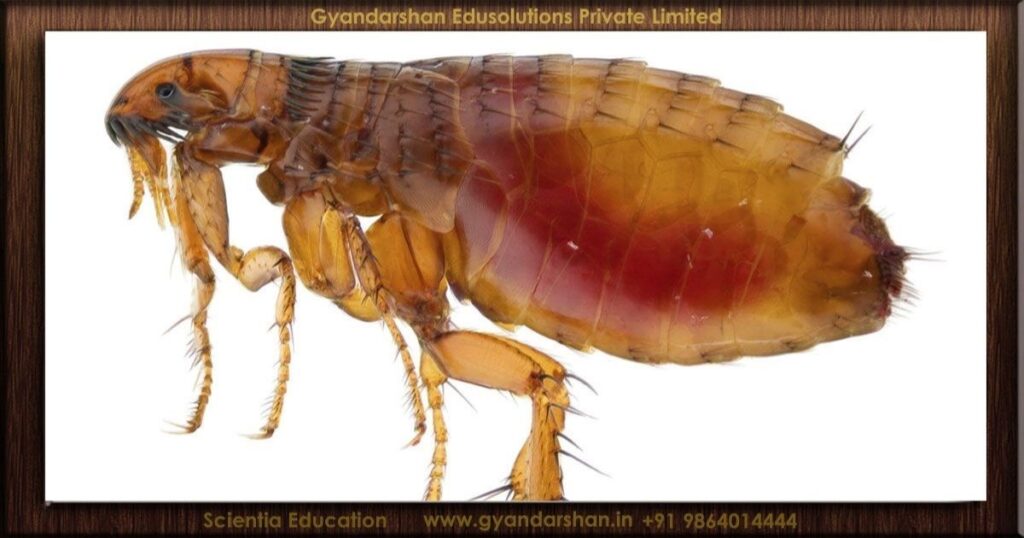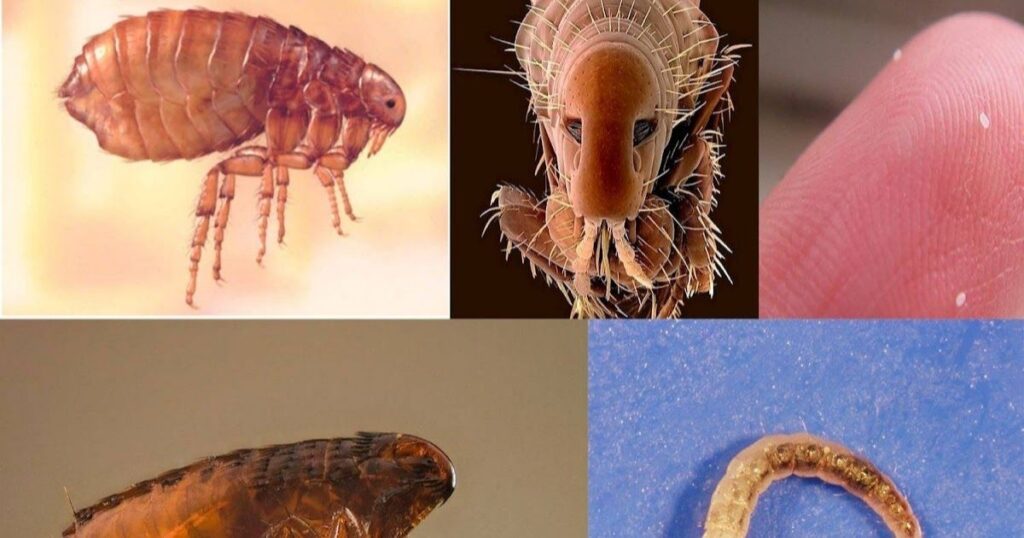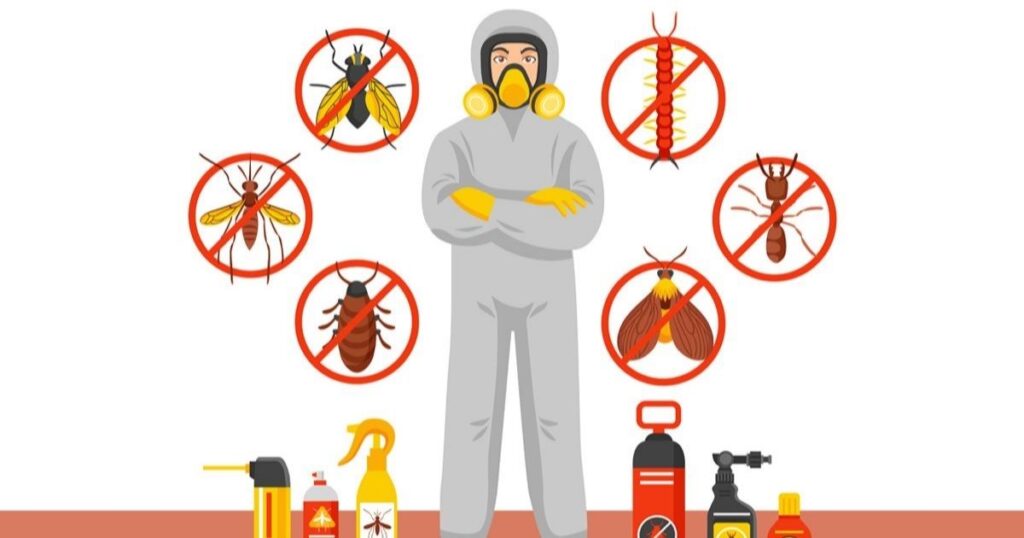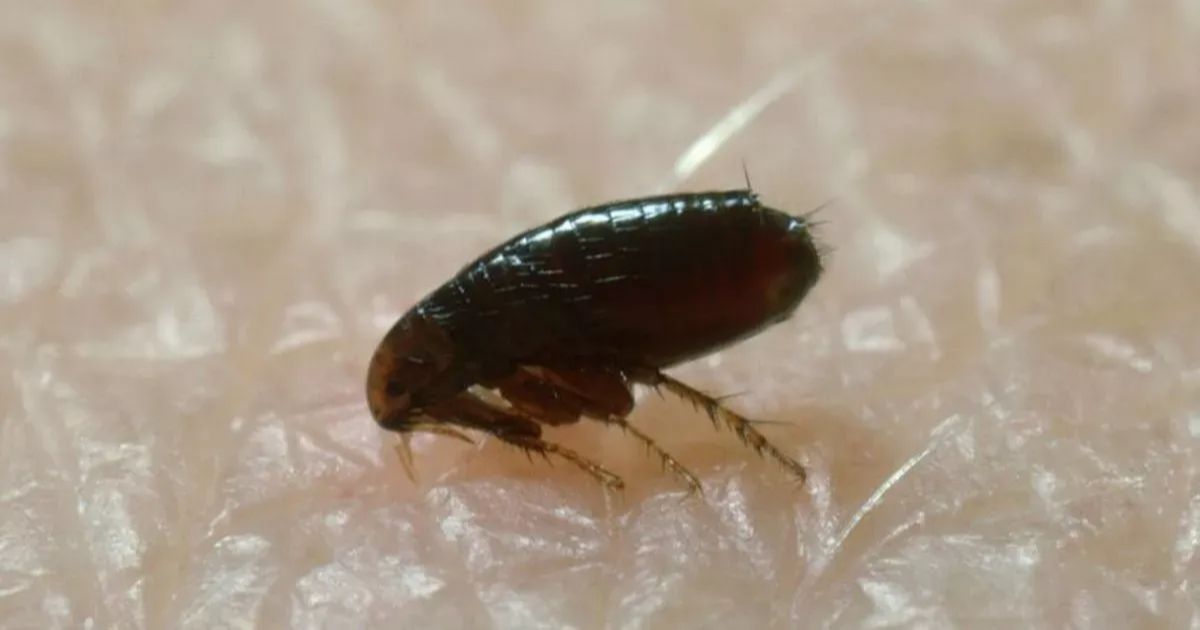Fleas are a common household pest that can be a nuisance for both pets and their owners. While these tiny insects may seem insignificant, understanding what they look like to the human eye is crucial for identifying and addressing an infestation.
By recognizing the physical characteristics of fleas, as well as the telltale signs of their presence, you can take the necessary steps to protect your home and your furry companions. In this article, we’ll explore the appearance of fleas and provide practical tips for spotting and preventing these unwanted visitors.
What Are Fleas?
Fleas are tiny, wingless insects that feed on the blood of animals, including pets and sometimes humans. These pests are typically about 1.5 to 3.3 millimeters long, making them hard to spot with the naked eye. Fleas are dark red or brown and have flattened bodies, which help them move easily through the fur of their hosts.
Their long, powerful legs enable them to jump significant distances, up to 100 times their body length. This remarkable jumping ability allows them to move quickly between hosts or from the environment onto a host.
Fleas go through four life stages egg, larva, pupa, and adult. The adult stage is when they are most problematic, as this is when they feed on their host’s blood. Understanding these characteristics helps in identifying and dealing with fleas effectively.
Spotting Fleas on Pets

Detecting fleas on your pets can be challenging due to their small size and rapid movements. However, there are several signs to watch for that can indicate a flea infestation. The most common sign is excessive scratching, biting, or licking, particularly around the head, neck, and tail areas.
Flea bites cause severe itching and discomfort, leading to these behaviors. You might also notice red bumps or scabs on your pet’s skin, especially in areas where the fur is thinner.
To check your pet for fleas, part their fur and look closely at their skin. Fleas are small, dark, and move quickly, so you’ll need to be thorough. Another telltale sign is the presence of flea dirt, which looks like tiny black pepper flakes.
Flea dirt is flea feces and can be found on your pet’s skin or in areas where they sleep. To confirm if it’s flea dirt, place some on a wet paper towel if it turns reddish-brown, it indicates digested blood, confirming the presence of fleas.
Identifying Fleas in Your Home
Spotting fleas in your home can be challenging with just a quick look of the human eye. However, knowing where to look and what to look for can make the task easier. Fleas often hide in areas where pets spend most of their time. Most commonly, this includes pet bedding, carpets, furniture, and cracks in floors. Look for the following signs to identify a flea infestation in your home:
Also read this post:flowers whose names begin with X,
Fleas vs. Other Tiny Pests

It’s essential to differentiate fleas from other small pests that might be infesting your home. Luckily, it isn’t too hard to do. Here’s how fleas compare to some common tiny pests:
Bed Bugs: Bed bugs are reddish-brown, flat, and oval-shaped. Unlike fleas, they do not jump but crawl. Bed bugs are usually found in mattresses, bed frames, and furniture crevices. They leave behind small blood stains and dark fecal spots on bedding.
Lice: Lice are small, wingless insects that infest the hair of humans and animals. They are typically grayish-white and do not jump. Lice are often found close to the scalp or skin, and their eggs (nits) are attached to hair shafts.
Mites: Mites are tiny, spider-like creatures that can infest animals and humans. They are much smaller than fleas and usually require magnification to see. Mites can cause intense itching and skin irritation, similar to flea bites.
Preventing Flea Infestations
Preventing a flea infestation is much easier than dealing with an established one. Regularly bathe and groom your pets using flea shampoos and combs to remove any fleas and flea dirt present on their fur.
Vacuum carpets, rugs, and furniture frequently, especially in areas where your pets spend most of their time. Be sure to empty the vacuum cleaner outside immediately after use to prevent fleas from re-entering your home.
Wash your pet’s bedding and toys in hot water often, and dry them in a high-heat setting to kill any fleas or other invaders. Use flea preventatives such as collars, topical treatments, or oral medications as recommended by your veterinarian to protect your pets.
Consider treating your yard with flea control products if necessary, especially in areas where your pets play. Finally, seal any cracks and crevices in your home’s floors, walls, and baseboards where fleas might hide and lay eggs.
When to Call a Professional

Fleas can be notoriously difficult to eliminate, and professionals have access to more potent treatments. If fleas have spread throughout your home and you’re finding them in large numbers, it’s best to seek professional assistance.
A severe infestation can quickly escalate and become harder to control. If you or your pets are experiencing significant discomfort or health issues due to flea bites, a professional can help address the problem quickly and effectively.
Homes with multiple pets may find it challenging to manage a flea problem due to the increased risk of re-infestation. Professionals can provide comprehensive treatments that address the entire environment.
If you don’t have the time or resources to tackle a flea infestation thoroughly, hiring a professional can save you time and ensure the problem is dealt with efficiently. Professional pest control services can offer customized treatment plans that target fleas at every stage of their life cycle, ensuring a more effective and lasting solution.
Conclusion
Fleas can turn your home and your pets’ lives upside down. By learning how fleas look with the human eye and taking proactive steps to prevent them, you can keep your household comfortable and healthy. If your flea problem is too persistent or severe, calling in professional help can make all the difference. For reliable and effective pest control, contact a reputable pest control company in your area. Their expert team can help you reclaim your home and protect your pets from the scourge of fleas.
FAQs
Are fleas visible to the human eye?
Fleas are typically 1.5 to 3.3 millimeters long, making them small and difficult to spot with the naked eye. While fleas can be seen by the human eye, their small size and quick movements can make them challenging to detect, especially in the early stages of an infestation.
Can you see fleas on humans?
Seeing fleas on a human’s skin is possible, but it can be quite challenging. Fleas are adept at hiding in hair, clothing, and hard-to-see areas, making them hard to spot even when they are present on a person’s body.
Are fleas harmful to humans?
Fleas can be harmful to humans, as they can transmit various diseases, including the plague, typhus, and tapeworms. In addition, flea bites can cause skin irritation, inflammation, and even allergic reactions in some individuals.
What do flea bites look like to the human eye?
Flea bites appear as small, red, itchy bumps on the skin. These bites are often clustered in groups and can be found on areas of the body that are exposed, such as the legs, arms, and torso. The bites can be intensely itchy and may cause discomfort or irritation.











